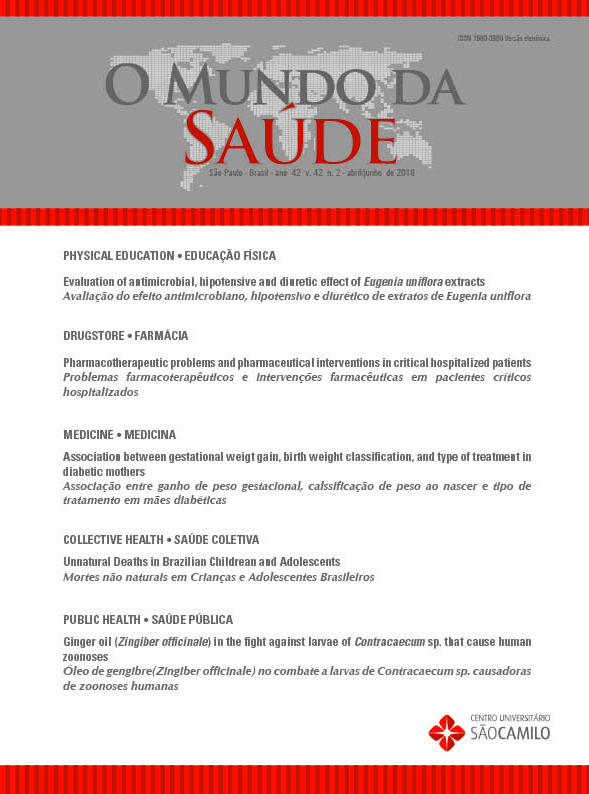Notification of adverse events and characterization of the triggering factors in the pediatric surgery unit
DOI:
https://doi.org/10.15343/0104-7809.20184202349368Keywords:
Adverse events, Patient safety, Nursing, Pediatric nursingAbstract
The study aimed to identify the incident-adverse events reported in a surgical pediatric unit and characterize triggering factors. This is a retrospective field study, with a documentary and descriptive quantitative approach, developed at the Pediatric Public Hospital in São Paulo, and data were collected for twelve months in 2015. 142 adverse eventsincidents were identified related to skin lesions, loss of central venous catheter, loss of nasogastric, enteral and gastrostomy tube, fall, administration of medication, drainage loss, loss of epidural catheter and phlebitis, resulting in mild damage in infants. The triggering factors were: inadequate fixation of peripheral venous access, serum infiltration, use of inappropriate adhesive tape; leakage, disconnection, rupture or breakage of the central venous catheter; accidental removal of the tube, cracks; deflated balloon; medication not available, lack of attention or error, lack of training; recklessness; ineffective communication; divergence in the standard operating procedure and late material replenishment process. It was concluded that the nurse was the professional who stood out in the identification and notification of the event, that the multiprofessional team and the patient-family should be encouraged to notify them, and that the detailed notifications generate preventive actions and strategies.






























